The Art Lawyer's DiaryTM The Venice Biennale Arte 2019: A Focus On New, Emerging and Usually Invisible Voices at the Mother of All Biennales
May 29, 2019
Prologue
As an art lawyer, I am interested in the intersection between art, law and politics -- particularly in reference to the body politic. As a founding board member of Performa, Roselee Goldberg's New York-based visual performance art biennale and for years involved in representing artists who work in the public sphere on percent or corporate commissions, my interests are particularly in art which challenges and interacts with existing hegemonic political structures and efforts by artists to cut through existing stereotypes and biases, to assert cultural and personal identities often marginalized or invisible. Such art often brings engagement in critical, sometime humorous dialogue with an audience to the forefront. Thus, in planning my agenda to review the 58th Biennale, I was particularly interested in visiting National Pavilions appearing at the Biennale either for the first time, such as Ghana and India, or National Pavilions with an emerging contemporary art scene not known globally, such as Mongolia. Having been inspired by the second edition of the Mongolia Pavilion Venice 2017, I visited Mongolia in October 2018 to experience the nomadic lifestyle and culture by a visit to the Golden Eagle Festival in the Altai mountains of western Mongolia, October 2018 and the art scene in the capital, Ulaan Batuur. I was also interested in the Pavilion of the Islamic Republic of Iran. I have been following Iran and its art scene since I had the privilege of visiting and learning about its ancient and rich cultural heritage during a visit in 2017. And in the interest of transparency, I was thrilled to see Martin Puryear represent the United States. Many New Yorkers and visitors to Madison Square Park are aware of his magnificent sculpture installation entitled Big Bling (c) (2016) , commissioned by Madison Square Conservancy. That commission inspired the Conservancy to apply to sponsor Martin and the Pavilion to the Department of State that selects the curator and artist for the US Pavilion, which is owned by the Peggy Guggenheim Museum in Venice. Madison Square Park Conservancy is the first public park organization to have been selected for this role. I have followed Martin’s career and amazing work for years, as well as representing him on a number of public art projects, including for the Getty Museum and the US Embassy in Beijing.
This year there were 90 National Participants or Pavilions located principally in the Arsenale, the Giardini and with about thirty throughout Venice . The curated International Exhibition is different from the official National Pavilions and is displayed in the Central Pavilion of the Giardini, as well as the Corderie of the Arsenale. The artistic director is selected by the Bienale foundation and sets the agenda for the Bienale and the International Exhibition.
Rugoff's Curated International Exhibition
The ostensible non-theme for this year's Biennale, selected by the artistic director Ralph Rugoff, was based on a fictitious Chinese proverb "may you live in interesting times." Notwithstanding that the Venice Biennale started having themes in 1972, Rugoff stated that the 58th International Art Exhibition will highlight a general approach to making art and a view of art's social function as embracing both pleasure and critical thinking. The title was meant to suggest and represent false news. Rugoff selected 84 contemporary living artists to participate. He explains his choices as follows: “all of the artists in this exhibition were selected because in some way their work acknowledges the open ended character of this exchange with the viewers own associative responses and interpretations to give meaning to their works of art. May You Live In Interesting Times has been formulated in the belief that an exhibition, like a work of art, is most deeply engaging when it provokes a vivacious inquisitiveness and encourages us to wonder and to question, and to try to better understand how different pieces of the world fit together.”
In a departure from Biennale practice, Rugoff gave each selected artist space in the Arsenale (Proposition A) or in the Giardini Central Pavilion (Proposition B). This was not a particularly successful endeavor for all artists, nor was the entire curated installation. While there were many successful installations and important works by artists both established and emerging, the International Exhibition as a whole in my opinion did not work as a curated exhibition: the artistic director's description of the curated exhibition was too general to present any real order or direction to the the installations which ranged from mini gallery exhibitions to large scale installations. Far from highlighting "artworks that explore the interconnections of everything," I found it difficult to experience how the artists spoke to each other.
The lack of curatorial vision or agenda made me recall with nostalgia some of the brilliantly curated themed exhibitions by other artistic directors over the years.
For example, the 52nd International Art Exhibition, directed by Robert Storr, Think with the Senses - Feel with the mind: Art in the present tense; the 54th International Art Exhibition, curated by art historian and critic Bice Curiger, ILLUMInations; the 55th International Art Exhibition, curated by Massimiliano Gioni, curator at the New Museum, The Encylopedic Palace. In that exhibition, performance artist Tino Sehgal was awarded the Golden Lion for Best Artist, the first time a performance artist was a recipient of this award. Angola, a first time Pavilion, deservedly won the Golden Lion for Best National Participation with an extraordinary site-specific installation by photographer Edsen Chagas, "Luanda Encyclopedic City", in the rented Palazzo Cini, a museum of Renaissance art, with wonderful paintings by Pontormo, Giotto, Botticelli and Piero della Francesca. There is a significant overlap in artists selected in this International Exhibition and that of The Encyclopedic Palace.
After two walkthroughs, I still really longed for the clarity and the vision of the recently deceased Okwui Enwezor, artistic director for the 56th International Art Exhibition titled All The World’s Futures, and Okwui's even more brilliant artistic curatorship of Documenta11 (2012). There are definitely others who prefer the more flexible curatorial approach of Rugoff, which can include any artist he likes.
The International Exhibit is always been a place of discovery: Pipoletti Rist, Ever is Overall (1997), El Anatsui, DUSASA II (2007), Tabimo (2007), and Lynette Yiadom-Boakye (2013). These artists have gone on to well-deserved art world success. Anatsui and Yiadom-Boakye are in the Ghana Pavilion. This year, I also made new discoveries. For example, Michael Armitage: his work was installed in the Arsenale as almost a mini-gallery exhibition. He also has some beautiful pen and ink drawings in the Giardini. Armitage hails from Kenya and works in Nairobi and London, represented by White Cube. In October, he will have a solo exhibition curated by Thelma Golden, at MOMA. He is definitely an artist to watch.
For those with extremely limited time who nevertheless want to see the International Exhibition, my suggestion is to get a detailed map from the Biennale website or the Exhibition catalogue, which indicates where particular artists are located in both the Arsenale and the Giardini and seek out only those artists.
Lawrence Abu Hamdan and Teresa Margolles are artists who I have followed and put in my own "curated" exhibition, When the Body Becomes Art (c) (2015). Hamdan focuses on the politics of listening, whilst Margolles trains a feminist lens onto the brutalities of narcoviolence that pervade her home country of Mexico. Having throughout her practice thematised governmental negligence, the social and economic cost of the criminalisation of drugs, and the specific textures, smells and physical remains – that is to say, the materiality – of death. For Mura Ciudad Juarez in the Central Pavilion, she installs sections of a concrete wall with barbed wire riddled with bullet holes to depict violence. She was awarded special mention by the jury. I found perhaps this section of the International Exhibition, including also the works of Shilpul Gupta, Untitled (c) 2009 (mobile gate) and Sun Yuan (1972) and Peng Yu (1974) China, Can’t Help Myself (c) (2016) and Christian Marclay, The Scream (c) (2018) the most successful curated part of the International Exhibition. I experience a sense of emotional fear and uncertainty collectively expressed by these artists for the times in which we live. Particularly Can’t Help Myself, with the constant interplay between the fluid and the robotic - and the works title, with its evocation of impulsive compulsive behavior - raises questions about the different and interrelated vulnerabilities of the organic and the mechanical. My own associative responses and interpretation were enhanced by the difficulty I had in finding the exit to the Central Pavilion - a sense of panic and fear that I would be late for a lunch meeting hosted by an international gallerist with artists from China. I still don’t know if the guard in front of the Mura, I asked to assist me finding the exit who responded “I’m not here to help you”, was a performer in the Margolles installation or an exception to the usually kind Venezia Polizia.
Two other artists have mini exhibits which are strong: Nicole Eisenman in the Giardini (B) and my New Orleans Prospect discovery , Njideka Akunyili Crosby represented then by Victoria Miro and now by Miro and David Zwirner.
In theory, most works of art in a Biennale are not for sale. That is actually no longer the case. Increasingly, Biennales have become a venue for galleries and collectors to acquire artists and works of art. The entire site, specifically the 2013 Angola Pavilion of Edson Chagas, although not the Palazzo Cini, was acquired at that time by collector Jochem Zeitz and is now exhibited as part of the collection at Zeitz MOCA in Capetown, South Africa.
Artsy recently reported on the winning gallery for artists' represented in Venice: "Notably, there are no artists represented by Gagosian in the Biennale this year; Pace and Hauser & Wirth have just one artist apiece. White Cube, Jay Jopling’s hugely influential outfit with spaces in London and Hong Kong, as well as an office in New York, has the most artists in the 2019 Venice Biennale, with seven. Five White Cube artists are featured in Rugoff’s exhibition: Julie Mehretu, Danh Vō, Christian Marclay, Michael Armitage, and Liu Wei. In the National Pavilions in the Arsenale, Xiangyu will be one of the four artists representing China, and Ibrahim Mahama is one of the six artists in Ghana's Pavilion." Marian Goodman has four artists: Leonor Antunes, Nairy Baghramian, Julie Mehretu, Kemang Wa Lehulere and Danh Vō. Worthy to note given its influence on establishing visual performance art, Performa participants in this year’s Biennale include Zanele Muholi, Mehretu, Lehulere, Christian Marclay, Joan Jonas (collateral event Ocean Space), Ed Atkins and Defne Ayas, curator of the first four Performa editions, originator of the Dutch Pavillion 2017 and co- curator of the Ganwgju Biennale 2020 (the International Jury).
National Participation Pavilions
Paolo Burrata at the US Pavilion talking about the importance of the National Pavilions
The pavilions I have selected, for the most part, represent the particular interests and biases stated at the beginning of this article. Coincidentally, as the press has appeared, it does seem that many of my choices do seem to overlap with the choices of “first responder art world pundits”. One of the themes in play in my analyses of the pavilions I have selected is the meaning of "National Pavilion" in the context of the Venice Biennale. There has been much criticism on a variety of levels of the National Pavilions. Perhaps one of the most trenchant was the brilliant artist and intellectual Alfredo Jaar when he represented Chile in 2013. His artwork called Venezia, Venezia presented a model of the Giardini submerged in water to suggest that the entire infrastructure had lost its meaning in the fluidity of globalized world culture.
The National Pavilions I discuss for the most part do not reject the concept of National Pavilions, although the meanings poured into the concept differ. In this sense, they reflect Rugoff’s view of art in general in its complexity. In his introductory essay, he quotes the artist Ian Cheng who objects to the idea that art must be meaningful. “I think this is a misunderstanding he has observed. Maybe the real purpose of art is to wrestle with the relationship between meaning and meaninglessness and how they transform each other.”
My discussion of the pavilions is organized more or less by location and proximity to each other.
United States Pavilion - Liberty/Libertà
Martin Puryear
Martin Puryear is one of the most highly respected and acclaimed contemporary sculptors practicing today, although globally he is underrecognized. Known for his historically engaged, deftly hewn wood forms, Puryear has honed his woodworking skills since the 1960s, when he learned the craft techniques of West Africa, while serving in the Peace Corps. He continues to use such techniques to develop organic forms that speak to the natural world, African-American history, and salient cultural issues. As the press release states, "Martin Puryear's enduring approach has galvanized his art for more than five decades: issues of democracy, identity, and liberty have long propelled him." Martin's works in the US Pavilion reflects the understated elegance and superb craftsmanship combined with the subtlety of the power of its form and inherent symbolism for which he is known. Martin has long recognized how utilitarian object can evoke monotonous labor, seasonal ritual, oppression or emancipation.
A Column for Sally Hemings, 2019, in the foreground, is dedicated to the African American slave owned by Thomas Jefferson, who was the father of her children. Puryear's iron stake at the crown also destabilizes and offers a critique of the Pavilion built in 1930, on the Palladian principles of Monticello, Jefferson's home, a slave. Puryear is not the first artist chosen to represent the US to critique the symbolism of its architecture. Puryear's predecessor Mark Bradford in 2017 had garbage strewn in the yard of the Pavilion. One of the most memorable for me was that of Ann Hamilton's myelin in 1999, who placed a veil of water glass that framed and distorted the image of the building seen through it. Inside the Pavilion, she had a fuchsia-colored powder sifting down the gallery walls, collecting on Braille dots that spelled out verse about human suffering.
Cloister-Redoubt has been characterized by Puryear as a meditation on the mystery of religious belief and a view of faith as an elaborately constructed edifice. Other objects in the Pavilion play on Puryear’s investigation of headwear, like the historical Phrygian cap or the aso oke (c) (2019). The latter is part of contemporary Nigerian dress and there is also reference to Yoruba textile and weaving.
There is no question that the intelligent elegance of the installation and the beauty of the artistic execution of the works made this Pavilion an artist’s, collector’s, art critic’s and curator's choice. In conversation, an internationaly exhibited artist told me she thought that the US Pavilion was perhaps one of the best pavilions she had ever seen.
It made me curious to see how many times in recent history the US had actually had its Pavilion selected. Surprisingly, I found out that although the process was somewhat different in 1964, Robert Rauschenberg who represented the US Pavilion in 1964 was awarded the Golden Lion for painting. Critics stated that this signaled the end of European dominance of the art world, and further that it cemented pop art as a marketable artistic commodity. In 1988, Jasper Johns represented the US with Jasper Johns: Work Since 1974. Apparently this was taken as a statement that the US was still interested in participating in an international art world and hordes of collectors from the US arrived for the pre-opening festivities. He was awarded the Golden Lion for painting
Canada Pavilion - ISUMA
Isuma Collective
Artist collective Isuma, founded by Norman Cohn and Zachariah Kunkun, for the past two and a half decades has made films and videos in the Inuit experience. This marks the first presentation of art by Inuit in the Canadian Pavilion.
Consistent with the view that national pavilions represent the spirit and mood of a nation at that time, is the Canadian Pavilion. Few countries are as enlightened when it comes to the recognition of indigenous or First Peoples as Canada, notwithstanding that the Pavilion deals with episodes of mistreatment of the indigenous people of Baffin Island. The Isuma collective is made up of artists and indigenous people and has a mission of preserving indigenous language and culture, including through indigenous language TV. In a sense, the Pavilion shows artists who in one generation have gone from "the age of stone to the digital era." Isuma means "state of consciousness" in the Inuktitut language. The International Exhibition artist who opined to me about the superiority of the US Pavilion commented when I had indicated my interest in Canada, "I am tired of National Geographic in a Pavilion." I disagree. The exhibitions in the Pavilions of Brazil and Canada are not only appropriate because the events which they depict and the issues raised are at the center of current major legal socio-political debate, but also because the insight and talents of the artists take these out of the realm of ethnographic documentaries.
Interview with producer and writer of the film One Day in the Life of Noah Piugattuk
Installation view of the video One Day in the Life of Noah Piugattuk
Brazil Pavilion - Swinguerra
Barbara Wagner & Benjamin de Burca
Swinguerra is a film commission for the Pavilion of Brazil. In representing Brazil at the Biennale, filmmaking duo Barbara Wagner and Benjamin de Burca spotlit the underrecognized Swingueira dance groups of Recife, Brazil. Swinguerra takes its title from swingueira, a popular dance movement in the north-east of Brazil, fused with the word guerra, meaning war. The artists, Wagner and de Burca, worked out popular expressions of contemporary culture in Brazil and their complex relationship to race, gender, identity, and desire. The film provides a deep and empathetic view of contemporary Brazilian culture at a moment of significant political and social tension. The predominantly black bodies, many of non-binary gender, are in many ways "the focus of contemporary disputes around visibility, entitlement and self representation in Brazil."
A clip from Swinguerra
France Pavilion - Deep See Blue Surrounding You
Laure Prouvost
Laure Prouvost is the third woman to be chosen for the French Pavilion after Anette Messager in 2005 and Sophie Calle in 2007. I encountered a young man of African descent at the entry of the Pavilion engaged in conversation with a journalist. When I asked him if he was the artist, he said, "No, it's the other black man." When I looked at him questioning, he said, "No, it's me." I told him I could interview him after seeing the Pavilion. Not knowing at that time the ethnicity of the artist who had been selected, I went through the Pavilion thinking that finally a person of African descent had been selected to represent France. It was interesting how it changed my perception of the experience of the Pavilion. On leaving, when I asked to speak to the artist, I was told that she had gone out for coffee. It turns out, the "artist" I had encountered was in fact one of the actors in Prouvost's film. Unlike several of the other pavilions discussed in this article - India, Ghana, Mongolia and even the United States - Prouvost questions the concept of "national representation" and more broadly the question of identity.
Belgium Pavilion - Mondo Cane
Jos de Gruyter and Harald Thys
This was a pavilion of parallel realities, which was awarded special mention by the jury.
Mongolia Pavilion - A Temporality
Jantsankhorol Erdenebayar (Jantsa) - an interactive sound performance by Mongolian traditional throat singers, accompanied by renowned German artist Carsten Nicolai, aka Alva Noto
Performance at Palazzo Grassi of artist and co-curator Carsten-Nicolai aka Alva Noto, with throat singers Ashit Nergui, Davaasuren Damdin,Altangerel Undarmaa and Damdin Khadkhuu
It is fitting, if art represents culture, the National Pavilion of Mongolia’s focus, in part, is on its intangible heritage. Mongolian ancestors that have traced back over 3 millennia have maintained a nomadic lifestyle where developments and the accrual of tangible creations, such as literature and art, were impeded due to the pastoral way of life, which required constant movement. Because of this limited context, oral traditions emerged and evolved as a principal means of expression and passed down through generations. With the progression of time, techniques of oral expressions acquired unique and complex forms. Originally, Mongolians practiced throat singing as a means of communicating with their inner selves, surroundings and animals. Sounds differed depending on the environment and evolved minds, bodies and spirits of the people emitting them. Throat singing was inscribed in 2010 on the list of the intangible cultural heritage of humanity by UNESCO under the convention for the safeguard of the Intangible Heritage (2003).
Curator Gantuya, who also organized the first and second editions of the Mongolian Pavilion, holds a degree in economics from Harvard and runs a contemporary gallery in Ulaan Bataar, commissioned the artist Jantsa to create sculptural installations to complement the brick-walled, interconnected cramped rooms of the old Venetian house. Jantsa's sculptural pieces made of hybrid plastic and raw construction materials are created specifically for the Mongolian Pavilion. By juxtaposing contemporary works with the spirit of the old Venetian house, the sculptural installations of Jantsa offer viewers moments of fleeting forgetfulness and reminiscence where artists can interact with the space and objects with the form by emitting traditional throat singing techniques and electronic music. Jantsa, who has studied in the US, is nevertheless greatly aware of his roots and is intrigued by Mongolian tales, riddles, proverbs, and the intellectual communicative mindsets that have occupied his nomadic ancestors. Jantsa pays homage to the sculptors Ursula von Rydingsvard and Nari Ward, who recently had his first long overdue solo retrospective show We the People at the New Museum in New York, imbued with the magic and power which has previously inspired Jantsa.
The Mongolia Pavilion is located outside the Arsenale. Walk past the Arsenale entrance turn right over the bridge and you will find it, as well as Pakistan.
Ghana Pavilion - Ghana Freedom
Ghana's first pavilion at the Biennale was much heralded. The Pavilion brought together Ghanaians from the diaspora as well as a younger generation of Ghanaian artists. It was a celebrity artist pavilion designed by celebrity architect Sir David Adjaye O.B.E., known in the US for being the architect of the National Museum of African American History and Culture (I was on the selection committee for what was then the Faith Ringgold Museum for Art and Storytelling in Harlem, which selected Adjaye for his first US project). The Pavilion includes an amazing three-screen video installation by John Akomfrah (1952) the noted pioneer filmmaker and artist who was a founder of the influential Black Audio Film Collective in London in 1982; large scale drape sculptures by El Anatsui (Golden Lion for lifetime achievement 2015); a large video/sculptural installation by Ibrahim Mahama, a younger generation Ghanian artist (1987) who uses the transformation of materials to explore themes of commodity, migration globalization and economic exchange; a video installation by photographer and glass artist Selasi Awusi Sosu (1976); portraits and photographs by Felicia Abban (1935), a true discovery with photographs much in the same genre as Malien photographers Malick Sidibé and Seydou Keïta, Lynette Yiadom-Boakye's (1977) paintings are a tour de force. The advisor for the Ghanaian Pavilion was Okwuchukwu Emmanuel Enwezor (1963-2019) to whom the catalog of the exhibition is dedicated. Consistent with one of the themes of this article, a catalog essay by Taiye Selasi, of Ghanaian Nigerian origin, "Who's Afraid of a National Pavilion?" posits the question "if the National Pavilion is so problematic - anachronistic at best, imperialistic at worst - why would any nation want one? Why would Ghana? What business has a post-colonial nation with a biennial based on colonial nationalism?" The answer posed is that "to the curator and the artists of the Ghana Pavilion take precisely that control, illuminate the complexity, flexibility, and multiplicity inherent in the notion of Ghana itself. Here we find Ghanaian creators involved in the project of imagining not a Ghanaian self, but Ghanaian selves; and doing so exultantly, unapologetically under the banner of nation." And further, she provided as one answer "to give Ghanaian artists, whose relationship to nation and self we allow to be opaque, the space to perform their interrogations on a global platform they deserve."
At the opening of the Pavilion, I had the opportunity to interview , Selasi Awusi Sosu. Sosu's Glass Factory II, 2019, was inspired by desolate and defunct state-owned industrial glass manufacturers in Ghana's Western region. In its prime the factory provided a livelihood for thousands of Ghanaians. Sosu visited the abandoned site on numerous occasions seeking to capture transient and past moments. She interviewed former employees of the factory who revealed a nostalgia for the past because many of them have since resorted to illegal small-scale gold mining which, unfortunately, processes gold by using mercury, detrimental to their health, the community and the natural environment. When I talked to Sosu, she indicated that being in Venice was more than a dream come true not only because she was participating in the Ghanaian Pavilion but also because she had tried unsuccessfully to work in glass in Ghana without much success. It was in fact a dream for her to envision working in Murano and learning how to use her envisioned medium of artistic expression.
I had the opportunity to speak with Selasi Awusi Sosu
India Pavilion - Our time for a future caring
India has a long history but it has taken the Indian art and cultural community quite some time to unite on the presentation of an Indian Pavilion at a Biennale. The curated presentation is a call to understanding Mahatma Ghandi's ideas in commemoration of his 150th birth celebration. The Pavilion weaves together contemporary artworks by eminent artists - Nandalal Bose (1882) (Haripura Posters 1937), MF Husain (1915), Atul Dodiya (1959), Ashim Purkayastha (1967), Jitish Kallat (1974), GR Iranna (1970), Rummana Hussain (1952), Shakuntala Kulkarni (1950) - emphasizing historical moments concerning Ghandi or invoking critical thinking in imaginary staged encounters. As the Indian Minster of Culture, Arun Goul stated, Secretary Ministry of Culture, "Mahatma Ghandi's life was his message… Ghandian values have always been an intrinsic part of the Indian ethos. Art is nothing but an expression of a nation's culture. The installation and artworks at the Indian Pavilion are an expression of the universal Ghandian values of truth, nonviolence, compassion towards fellow beings and nature, self-reliance, simplicity and sustainability."
GR Iranna, India Naavu (We Together), (c) 2012
Having migrated to New Delhi to study and practice art more than two decades ago, Iranna reflects on the atrocities of an increasingly brutal world, critiquing forms of violence, also appealing to resist provocations and unnecessary aggression.
In recent years, Iranna has taken to working with the unpredictable medium of ash, engaging with the ephemeral, with marks and traces and the dematerialization of matter. Subsequently, he has worked with commonplace objects such as padukas, or Indian slippers traditionally made of wood, associated since antiquity with spirituality and reverence. Doing away with Gandhi's widely identifiable eyeglasses, the spinning wheel or walking staff, Iranna turns to a less referenced object-symbol. Ghandi's padukas (indicative of his adherence to non-violence in the rejection of leather) allude to his idea of Satyagraha (passive political resistance), attained through the collective mass action of walking/marching. Gandhi, it is believed, in the forty years of his active political life, on an average, walked twenty kilometers every day.
Chile - Altered Views
Voluspa Jarpa
The project is a result of years of research into the reality of Latin American countries through CIA declassified documents. It is composed of three reversed cultural spaces/models: The Hegemony Museum, the Subaltern Portrait Gallery, and the Emancipating Opera. Voluspa Jarpa is the first woman to represent Chile at the Biennale.
Lithuania Pavilion - Sun & Sea (Marina)
Rugilė Barzdžiukaitė, Vaiva Grainytė and Lina Lapelytė
“Art is not a message that we can simply decipher and comprehend; indeed, interesting artworks do not offer us conclusions so much as deeply engaging points of departure. They provide unexpected pleasures and a residual sense of surprise and uncertainty; we might end up feeling that we simultaneously understand and do not understand them.” Ralph Rugoff said, “May You Live In Interesting Times.” This quote is indeed apt for the winner of the best Pavilion. A number of national pavilions might have received the Golden Lion, however the selection of Lithuania, funded by a Go-Fund Me campaign, cannot really be questioned. “The piece has to do with ecological issues and the Anthropocene,” Grainytė said. “But I didn’t want to be didactic because it’s such a big topic and it was important to find a subtle, romantic language.” My friend Yates Norton, a curator of a space in Lithuania and a collaborator and artist in the Pavilion talked about the challenge deliberately imposed of the eight-hour performance schedule.
As someone interested in opera and performance, I agree, it was really quite brilliant. Coincidentally, I learned Lithuania has won four other recognitions since its participation in the Biennale. Not only was I privileged to attend the performances before the announcement of the award, I subsequently learned that Performa's gifted former curator and co-curator of the next Gwanju Biennale was also member of the jury that awarded the prize to the Lithuanian Pavilion. Given last year's award of the Golden Lion to Anna Imhoff's installation, Faust, in the German Pavilion, and the addition of performances during preview week as a collateral event, it seems visual performance art has been recognized as an important medium of expression in international contemporary art.
Unfortunately, for non-preview week visitors, the eight-hour opera performed by the beachgoers will only occur on Saturdays.
Rugilė Barzdžiukaitė, Vaiva Grainytė and Lina Lapelytė, Sun & Sea. Vocals in this clip by Yates Norton
Taiwan Pavilion - 3X3X6
Shu Lea Cheang
Giacomo Casanova said, “One who makes no mistakes, makes nothing." Reflecting upon the transformation of surveillance techniques since the panopticon to include contemporary 3-D facial recognition, AI, and the Internet, Shu Lea Cheang's 3X3X6 restages the rooms of the Palazzo delle Prigioni -- a Venetian prison from the sixteenth century in operation until modern times -- as a high-tech surveillance space.
The Taiwanese Pavilion for me was one of the most forward-looking, creative and intellectually interesting. The complexity of the imagery and the ideas cannot be easily transmitted in this article. By way of illustration, some of the subjects addressed in various video and imagery include (i) the inverted electronic panopticon, (ii) Cassanova in pharmacopornographic times, (iii) Sade and the social contract in the age of sexual cyborgs, (iv) Foucault in Warsaw, and (v) the myth of the non-white rapist. As the curator Paul B. Preciado wrote in the catalog, "hacking digital surveillance technologies and social media, Chaeng uses the historical site of the Venetian renaissance prison to create a real time dissident interface that the visitor is invited to enter… whereas modernism negotiated the tension between craft and the emergent technologies of its era, the digital avant garde develops out of the reassessment, critique and collapse of modern aesthetics by post-internet technologies including data mining and mass surveillance. This digital avant garde movement undertakes two oppositional moves: one, Chaeng uses and misuses the possibilities of producing and distributing art specific to the internet; and second: She questions the hegemonic narrative that criminalizes sexual, gender and racial minorities… the norms that have established the difference between the normal and the pathological, the real and the virtual, the socially recognized and the invisible."
Iran Pavilion - Of being and singing
The Iranian Pavilion, located off-site in a house at Fondanco Marcello, is an exhibition of three artists, two from Tehran, Reza Lavassani (1960), Samira Likhanzadeh (1967) and Ali Meer Azimi (1984) who lives and works in Esfahan. The curator of the Pavilion states that it is "an homage to life and to precious moments of the past, present and future. The exhibition carries a message of piece from the cultural and artistic scene of Iran, a message seldom relayed to the world by contemporary media. Representing Iran are three artists hailing from various disciplines who magnify the glory of being and kind, identity and memory, reality and dreams. Challenging the clichéd notions of Iranian art as mostly composed of local elements and motifs, these artists represent the universal aspects of Iranian art through their artistic terminology." The banner which begins this article is "life." Through a deliberate choice of paper maiche, the artist underlines the literal and symbolic significance of recycling and portrays the artist's belief in recreation and the eternal cycle of life. For more immersion in contemporary Iranian art, visit The Spark is You: organized by Parasol Unit, London, curator Ziba Ardalan, in the Conservatorio di Musica Palazzo Pisani Campo Santo Stefano. The collateral exhibition brings together 9 Iranian artists of different ages, like Siah Armajani and New York-based YZ Kami, who now live and work the US with those working in Iran, who have had a similar early education and grounding in classical Persian poetry.
After five intense days of biennial events in Venice, it was refreshing to take a break to visit Murano. A quick vaporetto ride from near San Marco, I visited Glasstress, an exhibition curated by Vik Munez and Koen van Mechelen, artists include Carlos Garaicoa, Aiweiwei, Jaume Plensa, Sudarshan Shetty and Fred Wilson, among others. In its sixth edition, the exhibition for me was less interesting than two years ago and the space a bit crowded. Notwithstanding, there were some interesting works. Even more fun was to take another vaporetto for a twenty-minute from Murano ride to Burrano and relax with a marvelous, typically Venetian seafood luncheon at Il Gato Nero. My Italian friends shared a valuable tip: Buy the app Che Bateo, instead of Goggle Map for vaporetto time tables and GPS.
Author

Barbara Hoffman
Barbara T. Hoffman is recognized internationally and nationally as one of the preeminent art, intellectual property, and cultural heritage lawyers. With more than forty years of practice in every aspect of the field, Hoffman has been acknowledged by her peers with leadership positions in the New York City Bar Association and International Bar Association, elected to Super Lawyers, Best Lawyers...

:sharpen(level=0):output(format=jpeg)/wp-content/uploads/2019/05/The-Art-Lawyers-Diary-1.jpg)
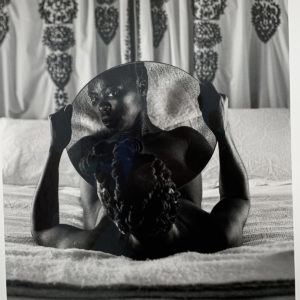
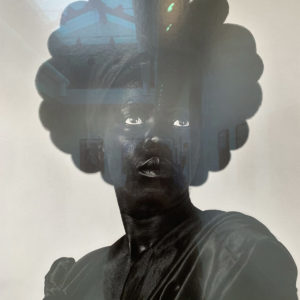
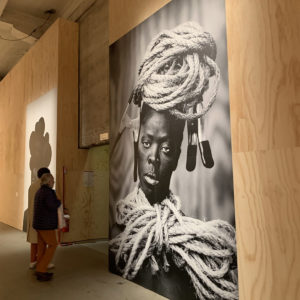
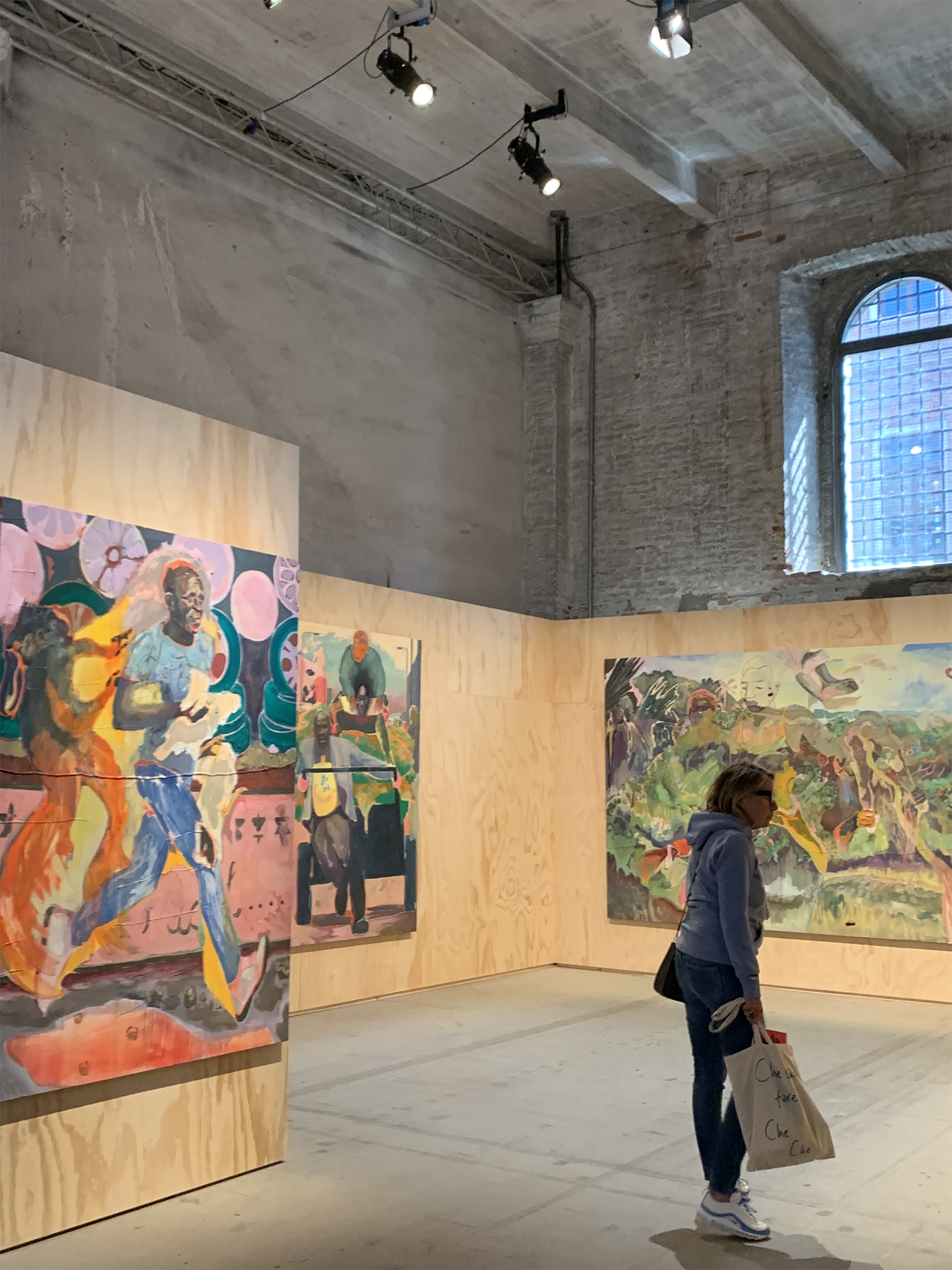
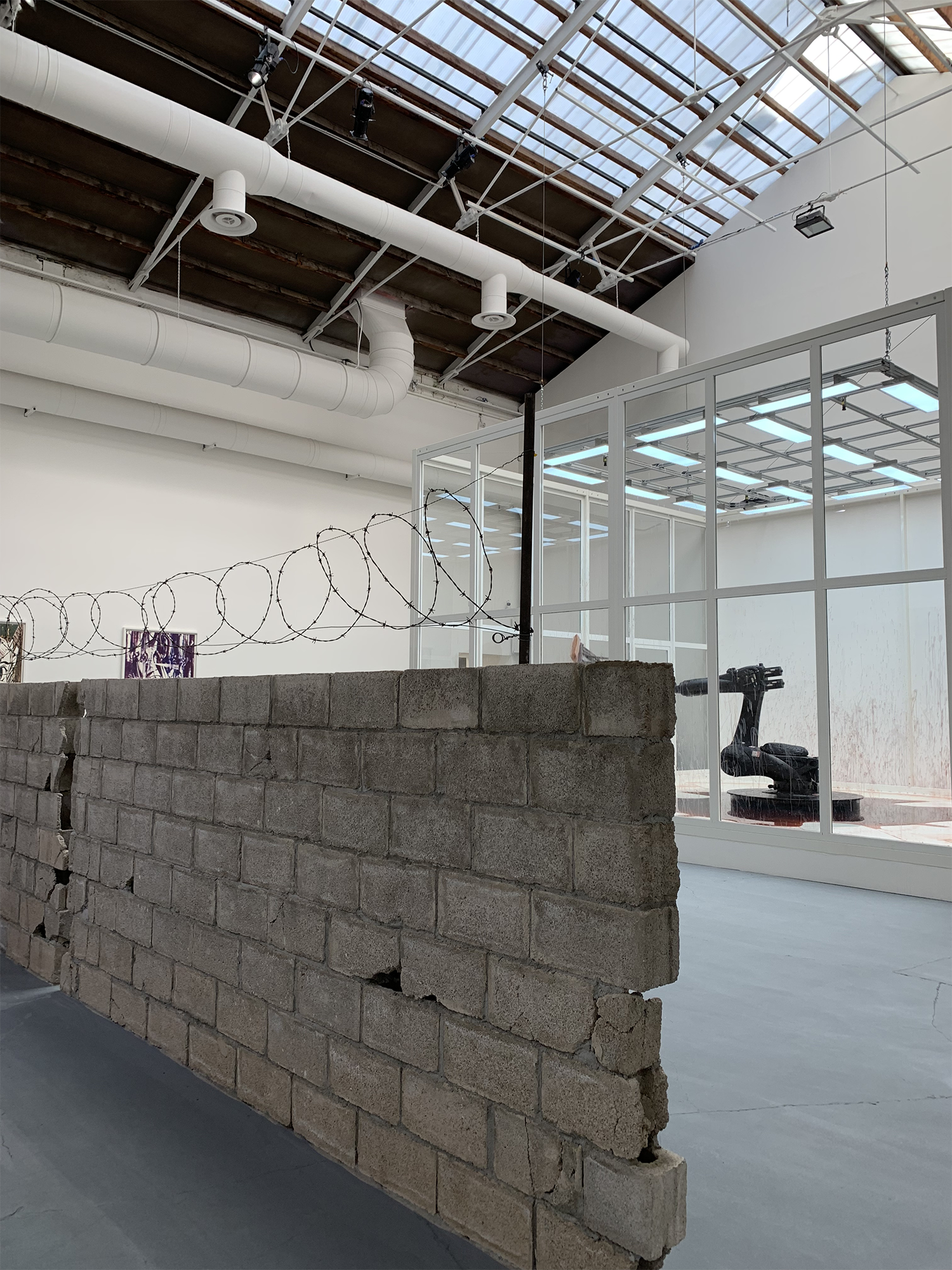
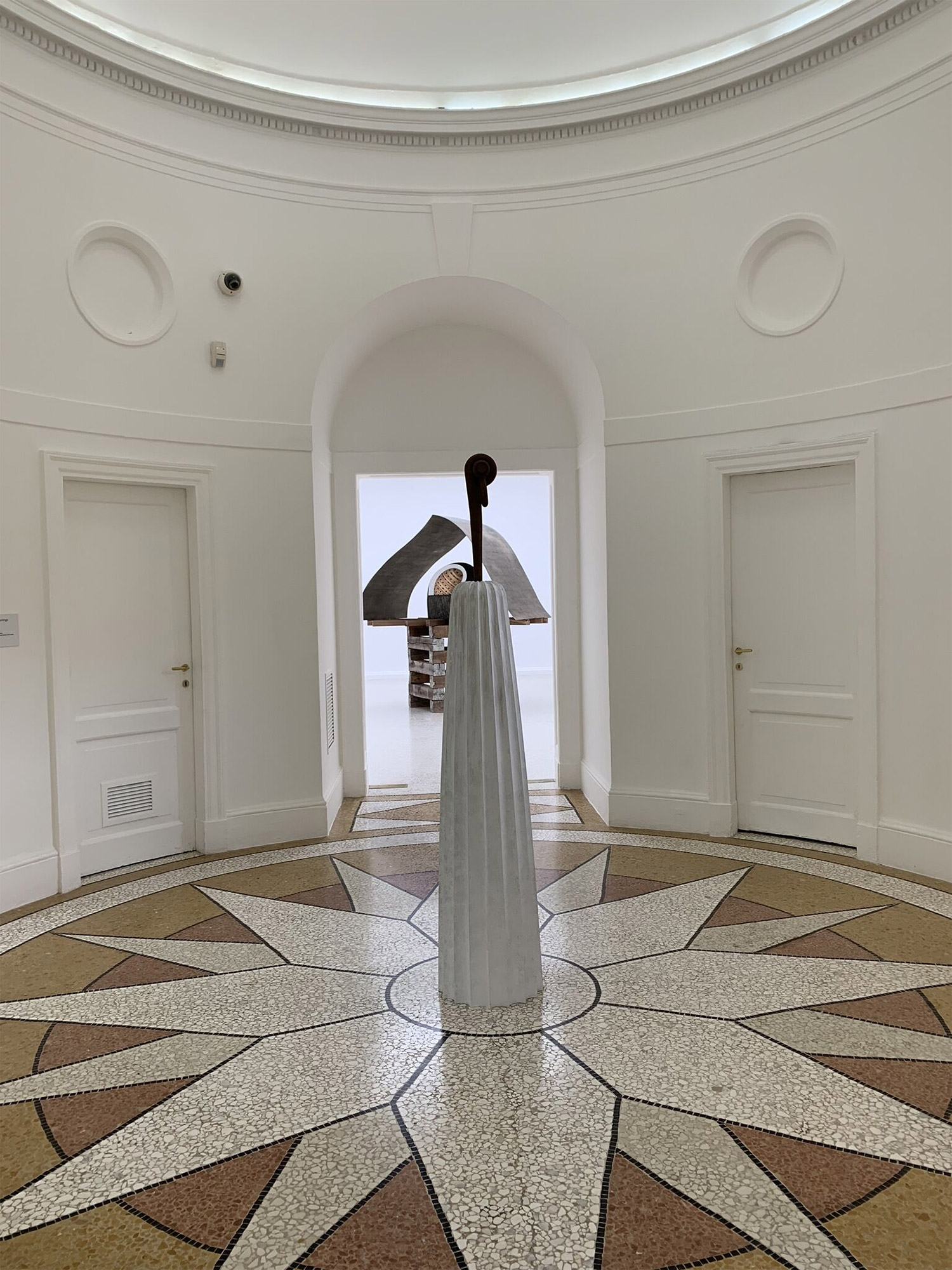
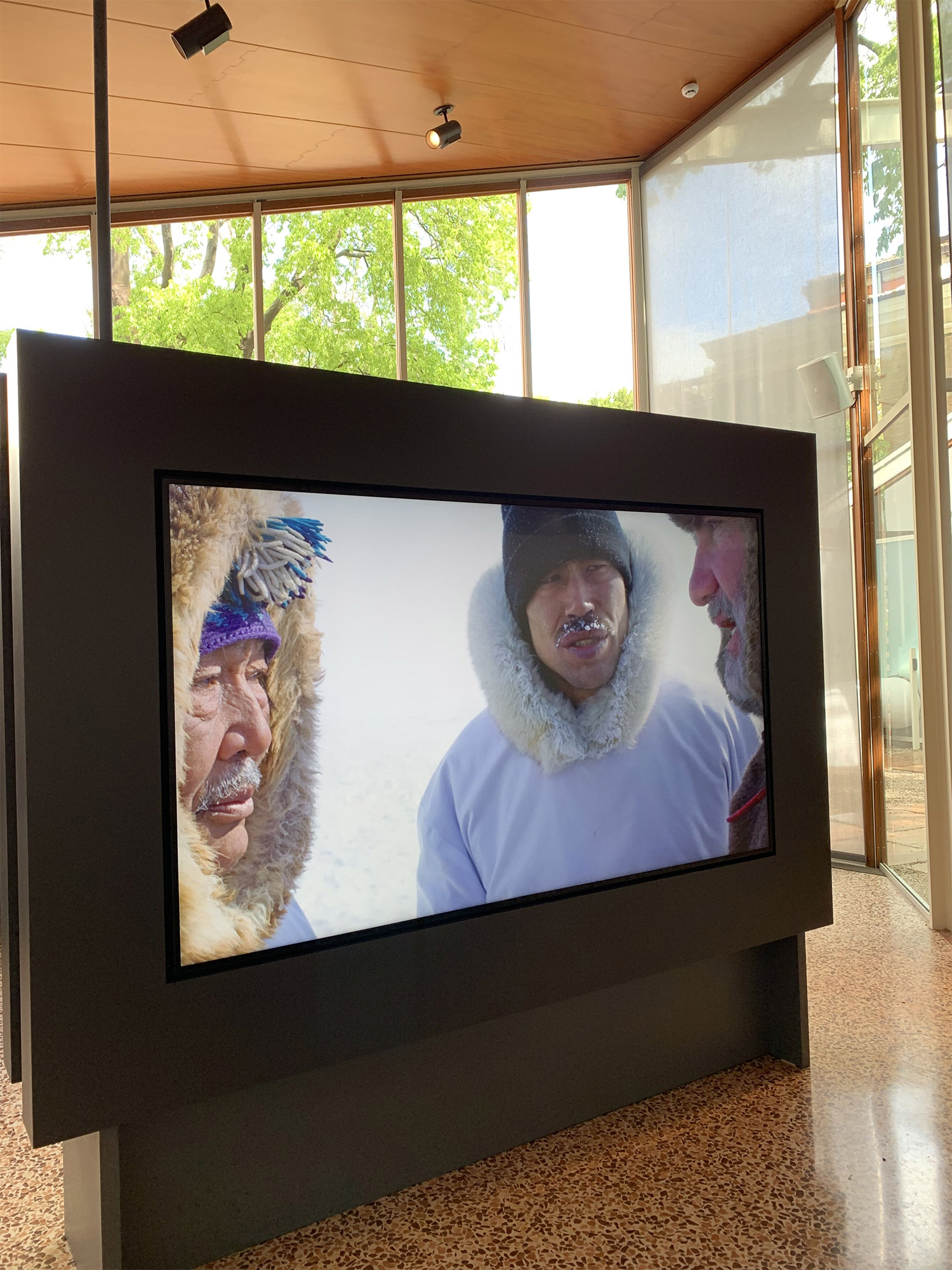
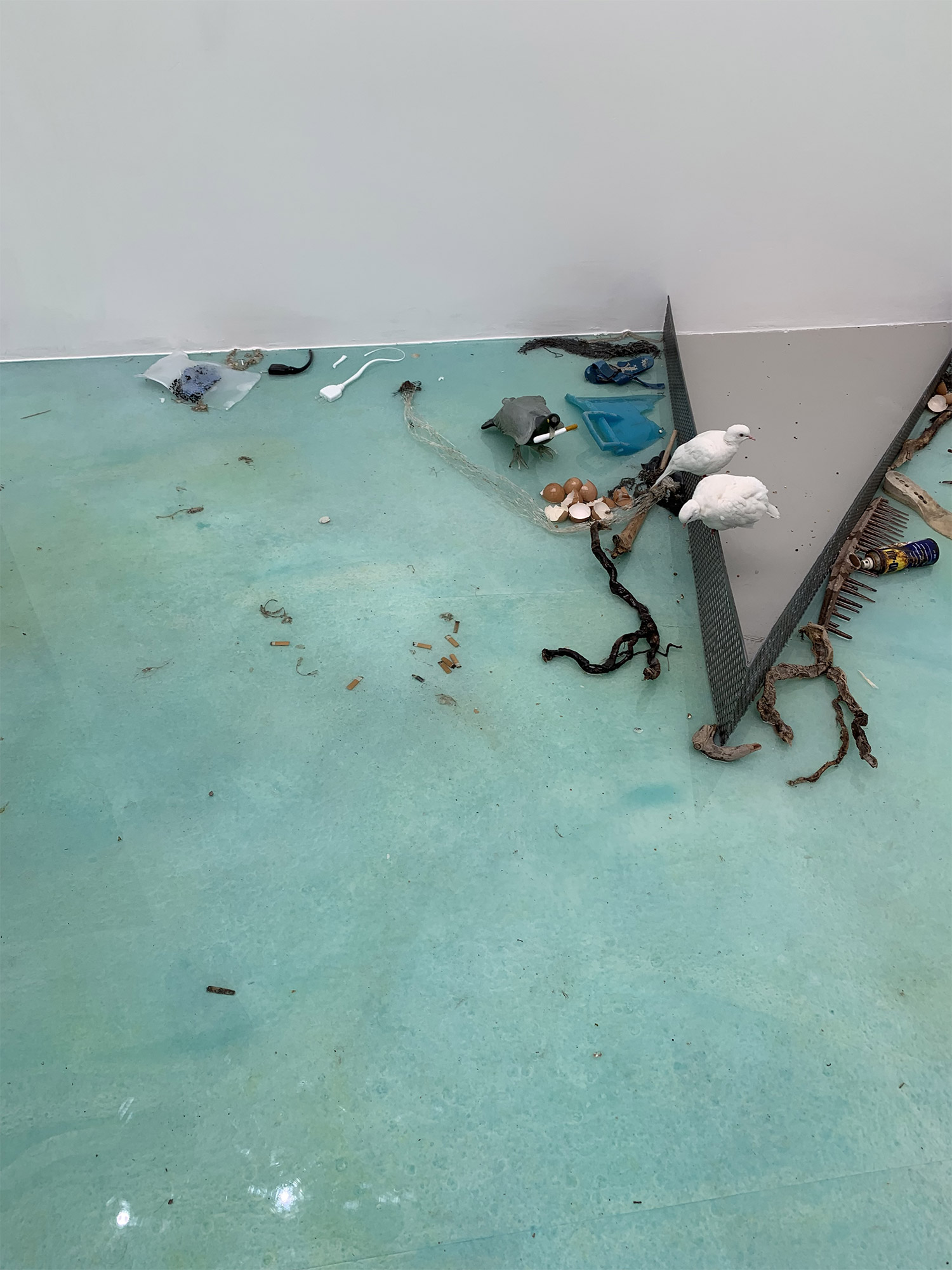
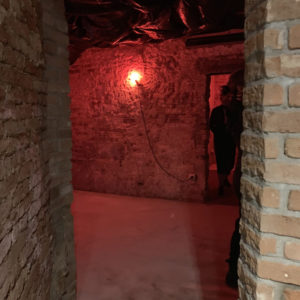
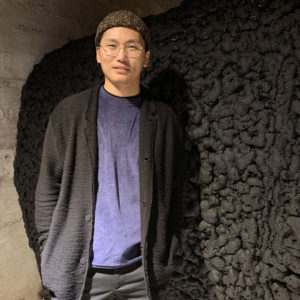
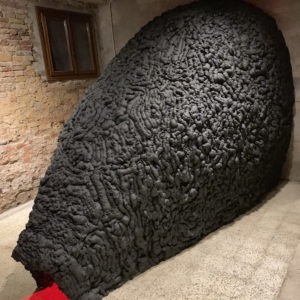
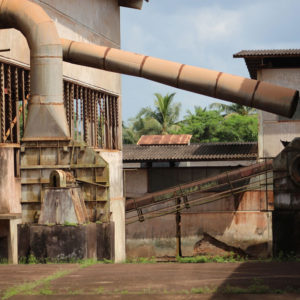
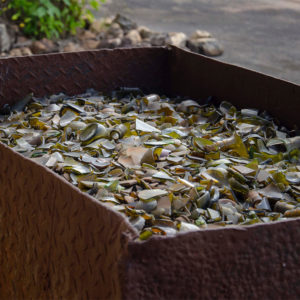
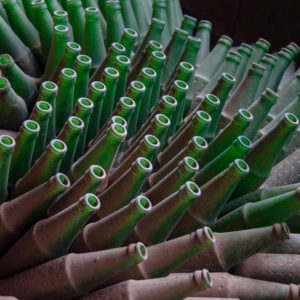

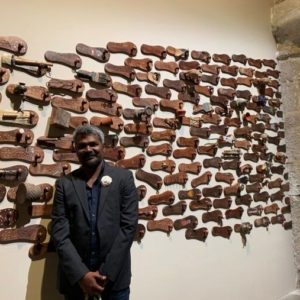
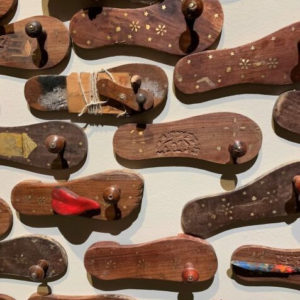
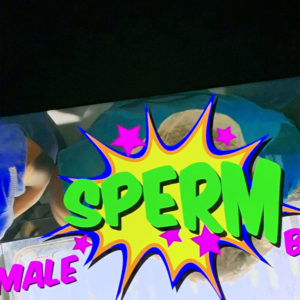
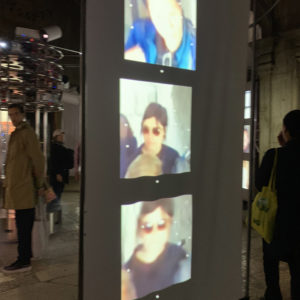
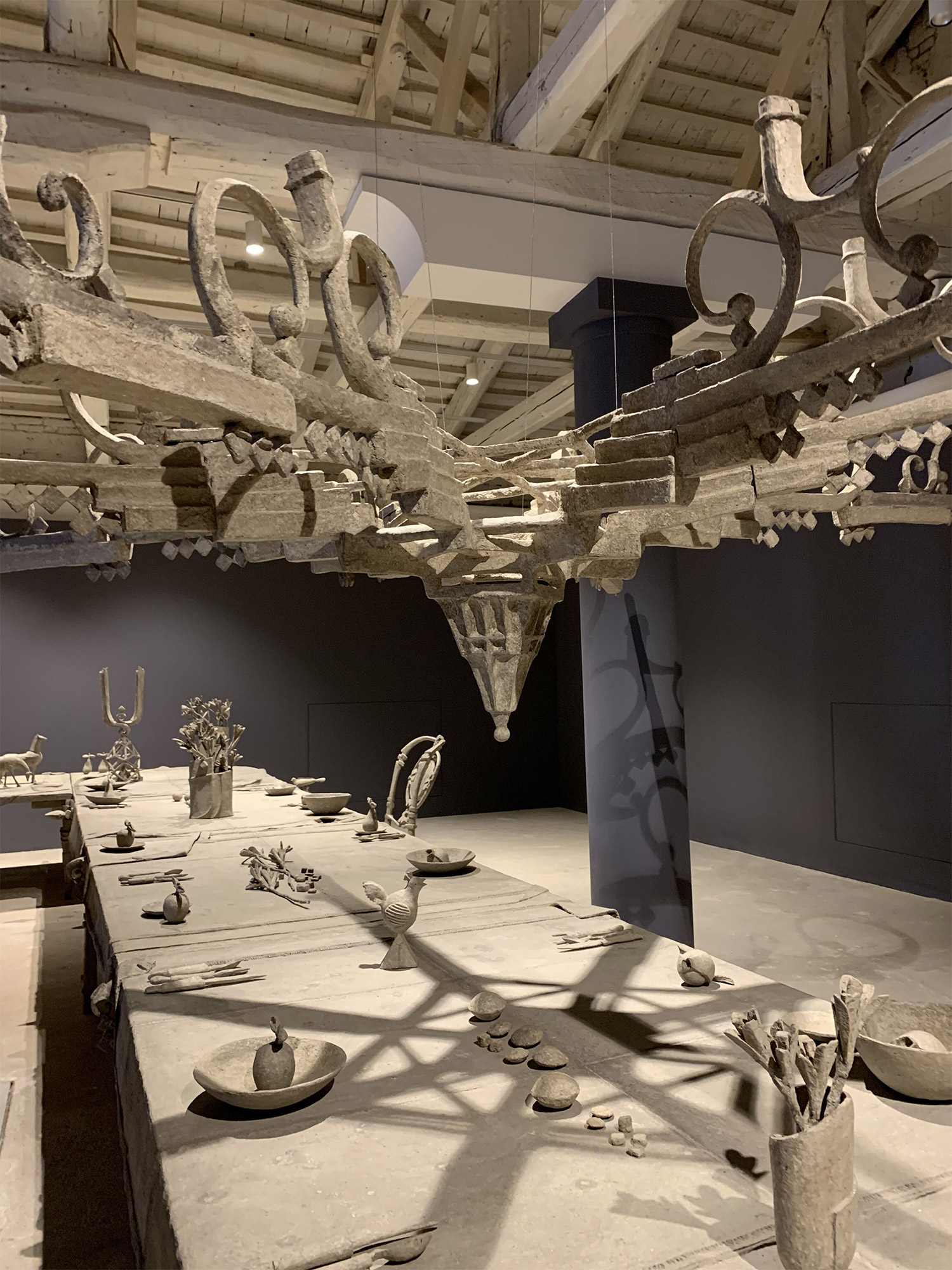
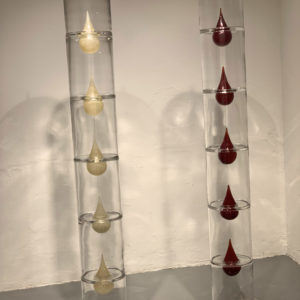
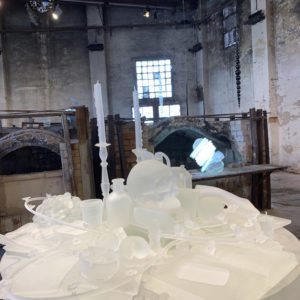
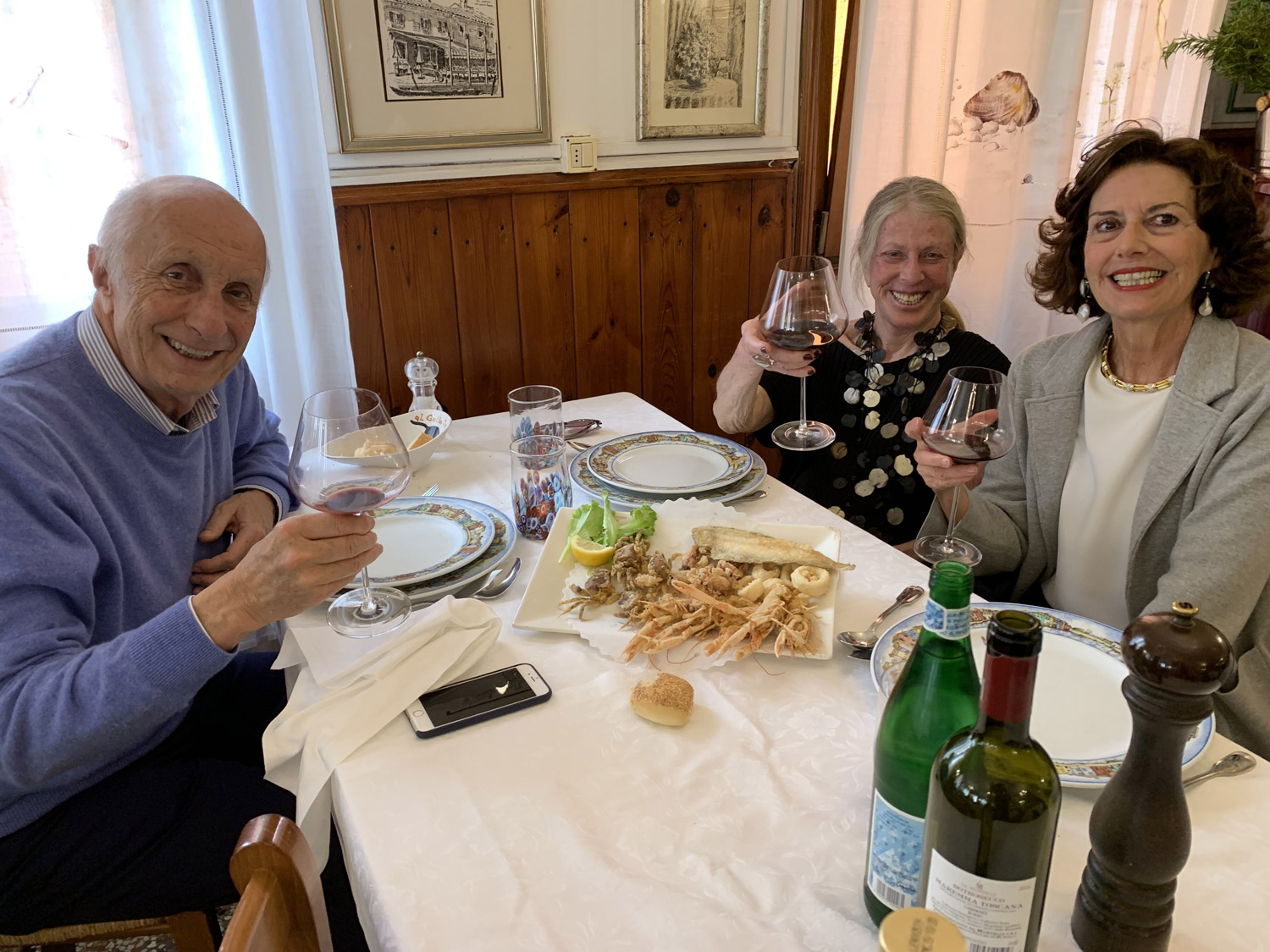
:sharpen(level=1):output(format=jpeg)/wp-content/uploads/2024/05/The-Art-Lawyers-Diary-1.jpg)
:sharpen(level=1):output(format=jpeg)/wp-content/uploads/2024/04/5-Questions-with-Bianca-Cutait-part-2-1.jpg)
:sharpen(level=1):output(format=jpeg)/wp-content/uploads/2024/05/20231208_164023-scaled-e1714747141683.jpg)
:sharpen(level=1):output(format=jpeg)/wp-content/uploads/2024/04/header.jpg)
:sharpen(level=1):output(format=jpeg)/wp-content/uploads/2024/04/5-Questions-with-Bianca-Cutait-part-1-1.jpg)
:sharpen(level=1):output(format=jpeg)/wp-content/uploads/2024/03/5-Questions-with-Alaina-Simone-1.jpg)